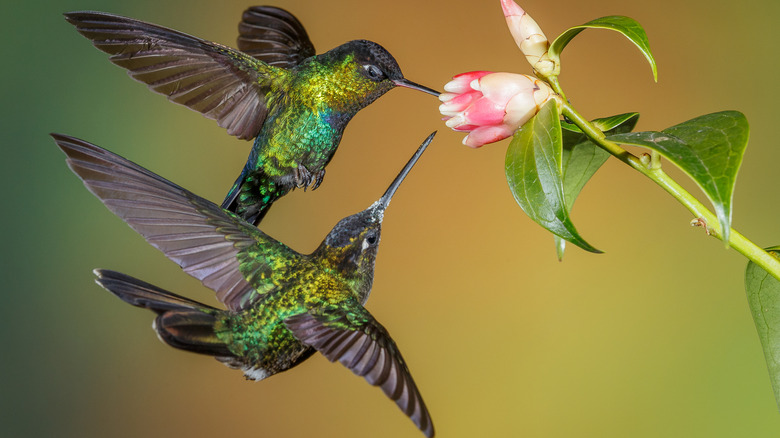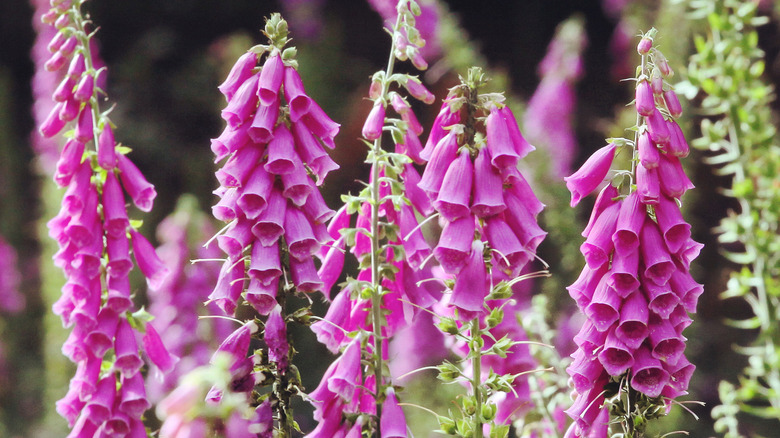Add A Plethora Of Color To Your Garden With A Self-Seeding Flower Hummingbirds Love
If you want a new flower to enhance your garden, look no further than the pretty foxglove (Digitalis purpurea). Planting this along with other pollinator favorites is one way to draw more hummingbirds to the garden with a simple strategy that works. Foxglove offers the little birds an accessible treat thanks to its tubular, bell-like flower shape. These longer blooms attract hummingbirds since they're perfectly made for their long beaks and tongues.
With nectar-rich blooms, each foxglove raceme can grow anywhere from 20 to 80 blossoms, which are often 2 or 3 inches long. These flowers come in a variety of colors, including white, pink, purple and sometimes, even spotted petals. While hummingbirds' favorite color is red, they also like other bright hues of pink and purple. Pick colorful varieties of foxglove when you can. Hummingbirds typically seek out nectar-rich flowers by sight, not smell, so the color can make a difference.
Foxglove typically thrives in USDA Plant Hardiness Zones 4 through 9. You can look for most of the blooms to appear in early summer. One word of caution: Avoid planting foxglove if you live in Oregon, California, or other milder Pacific Northwest climates where it's considered invasive and might take over your garden and may also displace native plants. Or, if you want to be on the safe side, tuck foxglove into a container, rather than in your flower beds.
Plant foxglove with these easy steps
If you don't live in the relatively wet and mild climates of the Pacific Northwest, and you want to plant foxglove, do so in a sunny or partially shady spot. This bell-shaped, tall flower craves damp, well-draining soil that's a little bit acidic. If it had its choice, it would pick highly organic soil, but it's not really all that picky about the type of soil it lives in, and will grow most places it is planted. If you want to know how to care for foxglove plants, know it's not drought resistant, so you'll need to give it a steady dose of water during particularly dry or hot stretches.
Keep in mind that in the first year after planting, your biennial foxglove won't bloom. Instead, it will just grow low-lying rosettes of leaves. The next year, however, you can expect to see its signature tall, spiky stalk of flowers. After that, the foxglove will most likely reseed itself every year, so you won't have to plant it again. One plant can produce up to 2 million seeds. If you don't want it to reseed at such high rates, then make a point to deadhead your flowers and remove them from the garden.
You can learn a few simple steps for pruning foxgloves into healthy plants with stunning blooms – just be careful when cutting. Always wear gloves, because the plant can irritate the skin. For this reason, you should keep pets and small children away from them in your garden, because eating foxglove can make people sick thanks to toxins in all parts of the plant.

